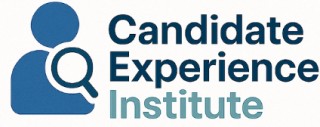Understanding Interim Solutions in Recruitment
Deciphering Temporary Solutions in Recruitment
In today's shifting employment landscape, businesses face dynamic challenges that may necessitate the need for interim solutions. These temporary options can be instrumental in addressing immediate needs, such as filling gaps until a permanent solution is found or when a sudden business change occurs. Organizations often turn to these interim options to maintain continuity and ensure operations are not disrupted by unforeseen circumstances.
Interim solutions come in a variety of forms, such as hiring interim professionals or temporary staff to support a company during transformative periods. This can help a company navigate through times of change without taking on the commitment of a full-time hire. Interim leaders, for instance, can oversee a team’s management or even perform strategic roles such as director interim or executive search, which often requires specialized expertise.
Businesses utilize interim solutions to provide immediate relief in several scenarios including succession planning or managing temporary business challenges. The advantages of these interim assignments include flexibility and cost-effectiveness. Interim professionals tend to be highly experienced individuals who can quickly adapt to a company’s culture and contribute to achieving short-term objectives.
The use of interim solutions is not limited to financial services but extends across a wide range of industries and roles. Organizations see them as effective at handling the transition during times of change both in the short term and in preparation for long-term objectives. By adopting such solutions, companies can focus on core tasks and maintain momentum during interim periods, thus stabilizing while seeking permanent placements.
Exploring interim solutions as part of a broader recruitment strategy can indeed enhance a company's capacity to manage business changes effectively. These strategies provide security and continuity, making them valuable tools for those responsible for recruitment and resource management. For more insights on creating engaging job advertisements that can attract the right talent, visit
Crafting Job Ads that Attract Top Talent.
The Role of Communication in Interim Solutions
Effective Communication: Bridging the Gap
In the realm of interim solutions in recruitment, communication stands as a crucial pillar. It plays a significant role in bridging the gap between temporary placements and the organizational objectives. As businesses navigate through change and face business challenges, a well-structured communication plan ensures clarity and alignment among all stakeholders.
When organizations opt for interim solutions, they are often in a transition phase, needing immediate yet temporary staff or interim professionals to fill vital positions. This is where communication can make or break the interim's success. By clearly defining roles, responsibilities, and expectations, companies can ensure that interim leaders integrate smoothly with the existing team, thus maximizing the potential of this temporary solution.
Moreover, open lines of communication provide interim professionals with the information they need to make informed decisions, which is particularly valuable in organizations undergoing executive search or succession planning. Effective communication solutions also help the management mitigate potential issues that may arise during this time.
Companies can also enhance candidate experience by crafting effective intake meetings, which set the tone for the interim period.
Enhancing candidate experience through effective intake meetings ensures that clear frameworks are established, aligning both the business interim team and the interim executive with the organization's long-term goals.
In conclusion, communication acts as the backbone of interim solutions, aligning temporary and permanent goals, and ultimately providing a seamless experience for all involved. It sets the foundation upon which interim solutions can be effectively executed, offering substantial assistance to the company when navigating times of change.
Leveraging Technology for Better Candidate Experience
Embracing Technological Innovations for a Greater Impact
In the ever-evolving sphere of business, technology continues to emerge as a key player in enhancing the candidate experience. When organizations face the need for interim solutions, leveraging technology is not just a luxury but a necessity. It can bridge the gap during periods of transition and offer significant advantages both in the short term and long term.
Utilizing an advanced Applicant Tracking System (ATS) can greatly improve efficiency in dealing with temporary staffing requirements. An ATS not only helps in managing applications efficiently but also supports the seamless continuation of processes during executive or director interim phases. Additionally, the use of AI and machine learning can enhance the recruiter’s ability to match candidates’ skills with business needs, providing a swift interim solution.
Furthermore, communication tools such as chatbots and virtual video platforms are transforming the way companies interact with candidates. These technologies provide interim leaders and HR teams with the ability to maintain open lines of communication effectively, ensuring candidates stay informed and engaged throughout the recruitment process.
Technology also plays a crucial role in facilitating ongoing feedback mechanisms, which are essential in refining interim solutions. By automating feedback collection and analysis, companies can swiftly adapt, enhancing both candidate experiences and business outcomes in real time.
For businesses in sectors like financial services where the stakes are particularly high, adopting a wide range of technological tools not only helps address interim challenges but also lays a foundation for more sustainable solutions. By investing in these technologies, companies are better equipped to handle changes and are more likely to retain top talent during transitions.
For more insights into positive performance indicators that can further enhance technology-driven strategies, visit
examples of positive performance indicators.
Embracing technology is indeed a cost-effective step towards implementing interim solutions, allowing organizations to meet their recruitment needs efficiently while maintaining high standards of candidate experience.
Feedback Mechanisms as Interim Solutions
Effectiveness of Feedback Mechanisms
Providing feedback in a timely manner is crucial for any organization utilizing interim solutions, especially when faced with the dynamic changes in a company. Implementing proper feedback mechanisms not only enhances the candidate's experience but also bridges gaps between temporary and permanent roles.
Understanding the pivotal role of feedback can help improve the overall recruitment process, ensuring both interim professionals and full-time employees feel valued. As interim leaders often step into a company to drive short-term projects, real-time feedback becomes an essential tool for management to gauge performance and provide guidance.
Feedback mechanisms are not limited to evaluating employee performance. They serve as a platform to understand business challenges and gather insights that contribute to refining future recruitment strategies. This ensures that the organization is not just focusing on immediate needs but also on long-term solutions that uphold the quality of their talent pool.
Additionally, feedback plays a strategic role in succession planning. By consistently evaluating interim executives and their impact, organizations can identify potential candidates for longer-term opportunities, further enhancing the overall effectiveness of their executive search processes.
However, while feedback mechanisms offer significant benefits, they can be challenging to implement effectively. Organizations need to ensure that feedback is constructive, unbiased, and culturally aware. Establishing a transparent system that allows interim professionals to voice their own feedback and experiences can lead to mutual growth and a more cohesive team environment.
In summary, strategic feedback mechanisms serve as a bridge, providing insights into the effectiveness of interim solutions while promoting a seamless transition for both interim and permanent staff. They help in understanding and evaluating the role of interim staff in various business processes, thus fostering a progressive corporate environment.
Challenges in Implementing Interim Solutions
Addressing Implementation Challenges of Interim Features
Implementing interim solutions in the realm of candidate experience is not without its challenges. Businesses often face hurdles that require careful navigation. Below, we explore some of these common challenges and how organizations can effectively tackle them.
One major obstacle is resistance to change. Employees and management may be accustomed to their established workflows, making it difficult to adapt to temporary measures. In such cases, clear communication becomes crucial. It's essential to articulate the rationale behind interim solutions, explaining how they provide immediate benefits while paving the way for more permanent improvements.
Another challenge is integrating new technology. Leveraging technology efficiently is crucial for enhancing candidate experience, yet it can be daunting. Firms may struggle with choosing appropriate tools that align with their specific needs and budgets. Here, interim professionals with expertise in IT can play a pivotal role, offering insights and hands-on assistance to smoothly transition operations.
Cost considerations can also pose a barrier. Implementing interim measures requires financial investment, both in terms of resources and time. While interim solutions can be cost effective in the short term, companies must carefully assess if the benefits outweigh the investment required. Organizations should conduct a thorough cost-benefit analysis when planning their interim strategy.
The temporary nature of interim solutions often leads to continuity issues. Maintaining consistency and quality during a period of change can be challenging. Leaders must ensure that temporary staff and interim leaders are well-briefed and integrated into the team to uphold service standards and business continuity.
In conclusion, while interim solutions present practical pathways for addressing immediate needs in candidate experience, companies must be prepared to face and overcome the challenges of implementation. With the right strategies, these solutions can serve as effective stepping stones toward long-term success in talent acquisition and retention.
Future Trends in Interim Solutions for Candidate Experience
Exploring the Future of Interim Solutions in Candidate Experience
The landscape of candidate experience continues to evolve with shifts towards more adaptable and responsive interim solutions. This progression is in response to the growing need for companies to remain competitive while addressing both short-term and long-term business challenges. As times change, organizations increasingly recognize the importance of flexible strategies in managing human resources effectively.
Interim solutions play a vital role in providing companies the agility needed to transition smoothly through periods of change. These solutions are not only temporary placeholders but strategic initiatives that help bridge gaps when executing executive roles, navigating succession planning, or meeting other immediate organizational needs.
- Adoption of Technology: Leveraging modern technology is key. From AI-driven platforms that enhance recruitment processes to tools that support virtual interviews and assessments, businesses will need to intensify their focus on technology. Broader adoption of these solutions provides a better candidate and employee experience, enhancing engagement and streamlining hiring processes.
- Focus on Flexibility: Organizations will continue to seek cost-effective solutions that can be adapted easily as their needs change. Interim professionals such as business interim managers and director interim leaders offer the expertise required without the commitment of full-time hires. This trend towards flexible staffing models will be crucial in meeting dynamic market demands.
- Enhanced Communication: Transparent and open communication remains a critical element in ensuring that interim solutions work effectively. As mentioned in previous discussions, maintaining a clear line of dialogue not only supports successful integration of interim staff but also fosters a positive organizational culture.
- Focus on Diversity and Inclusion: The focus on diversity, equity, and inclusion (DEI) will persist, encouraging companies to utilize interim and full-time recruitment services that provide a wide range of candidate profiles. Incorporating diverse interim leaders can foster a culture that prizes varied perspectives and innovative solutions.
- Integration with Permanent Solutions: Organizations will increasingly intertwine interim and permanent recruitment strategies. This holistic approach enhances the company's ability to react to unforeseen challenges swiftly while keeping an eye on long-term strategic goals.
In conclusion, as organizations strategize their future human resource frameworks, interim solutions will remain a cornerstone. The ability to integrate these alongside permanent recruitment efforts enables enterprises to maintain a competitive edge, adapt to industry shifts, and ultimately foster a robust candidate experience.














